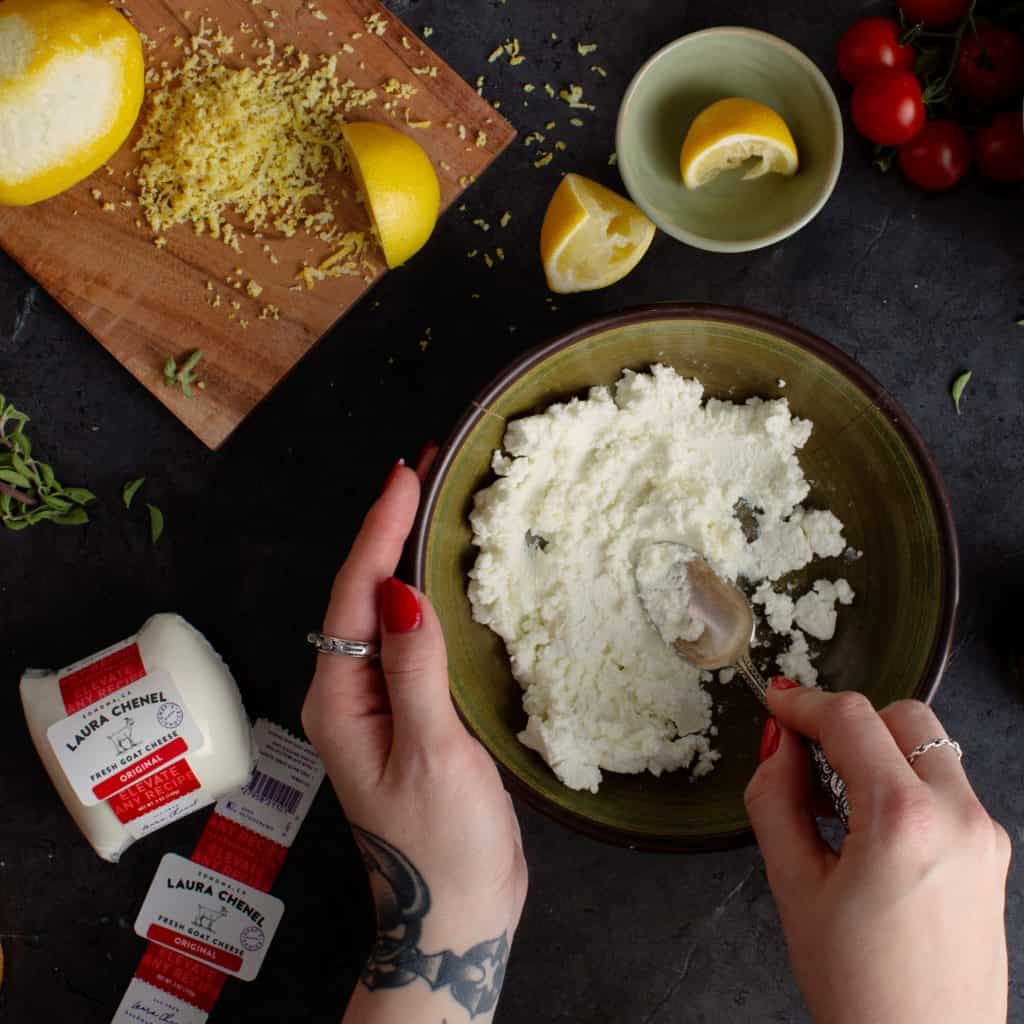
The third Virtual Counter Culture in culture’s ongoing series transported participants to California’s Bay Area, home to two renowned American makers of French-style cheeses—Laura Chenel and Marin French Cheeses.
Madeleine Coogins, trade marketing associate for RIANS—the parent company of both operations—offered a history of Laura Chenel, which is entering its fifth decade in goat-cheese production. The pioneer of goat cheese making in America, Chenel launched her business at farmers’ markets in 1979. Her first big customer was celebrated chef Alice Waters, of Chez Panisse in Berkeley, who coated slices of Chenel’s original goat cheese log in herbed breadcrumbs, baked them, and served them on top of a mesclun lettuce salad. The now-famous goat cheese salad is still on Chez Panisse’s menu (get the recipe here). After running her creamery for 27 years, in 2006 Chenel decided to retire. She sold the business to RIANS, owned by the Triballat family. In 2011 they built a new Laura Chenel creamery in Sonoma—the first LEED Gold-Certified Creamery in the country. Chenel began making cheese because she loved goats and the cheeses are still made with milk from 13 family-owned goat dairies in California, Nevada, Oregon, and Idaho. “We believe that if you raise goats with love and care that translates into a high-quality product,” said Coogins.
Next, Coogins stepped out into the California sunshine, swiveling her camera 360 degrees to show the pastoral landscape of Hicks Valley Ranch, home to Marin French Cheeses. The 700- acre ranch was purchased in 1865 by Jefferson Thompson, who created a fresh, springy “breakfast cheese” to feed the influx of miners returning to San Francisco after the Gold Rush. More than 150 years later, Petite Breakfast is still being made, along with traditional and triple-crème brie, camembert, and Schloss, a washed-rind cheese with a full, distinctive flavor. All Marin French Cheeses are made with the combined milk of Holstein, Guernsey, and Jersey cows. “These are cheeses that are made in the French style but reflect the terroir of our location in California,” said Coogins before introducing cheesemaker Simon Perrier to discuss the creamery’s cheese-production methods. A native of Normandy who came to the United States two years ago, Perrier explained that the rinded cheeses start showing signs of the white, velvety coat characteristic of Brie about four days after the rounds are made. “The ripening works from the outside in,” he said, showing examples of newer and more aged Bries. These cheeses ship 45 days after being made and 33 days after they are packaged; Coogins pointed out that the recommended time to eat them is indicated on the packaging. It was finally time for tasting, and participants joined in along with Coogins, Perrier, and culture founder Stephanie Skinner, who relayed comments and pairing ideas. Here are a few we noted, but please comment with your own ideas!
LAURA CHENEL
Chabis
- fresh peach slices
Goat Brie
- mostarda
- flammenkuche (Alsatian-style pizza)
- galette with leeks and onions

Cranberry Goat Cheese
- toasted bagel
- honeycomb
- sweet potatoes
MARIN FRENCH CHEESE
Petit Breakfast
- sautéed corn and fresh tomato
- pepper jelly
- salami
- hibiscus marmalade
- lemon curd
- matcha tea-infused local honey
- blueberry lavender compote

Brie en Croute
- sparkling crémant

Triple Crème Brie
- pepper jelly
- mild salami
- pecans
Check out the video of the event here







